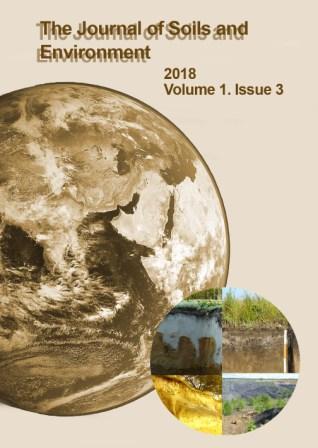Biodiversity of bacterial assemblages in the Haplic Cambisol under Korean pine
DOI:
https://doi.org/10.31251/pos.v1i3.31Keywords:
Korean pine, Pinus koraeansis, brown forest podzolic soi, Haplic Cambisol, 16S rDNA, metagenomics, biodiversity, rhizosphereAbstract
The aim of the study was to investigate genetic diversity of bacterial assemblages in a Burozem eluvial soil (Haplic Cambisol) and reveal their relationships with soil chemical and microbiological properties.
Time and location of the study. The Haplic Cambisolsamples were collected from 0-20 cm layer (immediately below the litter) from adjacent plots with Korean pine of the long-term (40 years) field experiment in the Khabarovsk region (48°16' N, 135°02' E).
Methodology. Bulk and rhizosphere soil samples were collected, the latter by gentle shaking of 3mm-thick pine roots and collection of adhered soil. Some chemical (pH, organic C and N content, exchangeable nutrient) and microbiological (soil microbial biomass C and N content, soil basal and substrate-induced respiration) properties were determined. Soil metagenomic DNA was extracted and used as a matrix for amplification of the hypervariable V3-V4 regions of 16S rRNA genes with universal bacterial primers. The obtained amplicons were sequenced using Illumina MiSeq. The read data reported in this study were submitted to the GenBank under the SRA accession SRP152492, available online at https://www.ncbi.nlm.nih.gov/sra/SRP152492. The sequence reads were identified down to operational taxonomic units (OTUs) at the 97% similarity level. Then the matrix with OTU reads abundance was statistically analysed by principle components analysis, multidimensional scaling and ANOVA. Indices of α- и β-biodiversity were also calculated.
Main results. In bacterial assemblages of the Haplic Cambisolunder Korean pine, growing in its natural environment, overall 400 OTUs were identified, with just 42 OTUs being dominant, i.e. contributing ≥1% into the total number of sequences. The studied soil was dominated by Acidobacteria (34% of the total number of sequences), Proteobacteria (25%) and Actinobacteria (9%). The indices of species richness were determined mostly by the first dominant phylum, whereas the biodiversity indices related mostly to species evenness were determined by the second dominant phylum. The major classes were Alphaproteobacteria (21%), Acidobacteria group 1 (13%) and Ktedonobacteria (12%). Among the first 5 dominant OTUs two OTUs were present in all soil samples. They belonged to the Rhizobiales, ,i.e. nitrogen-fixing bacteria.
Conclusion. The species composition of bacterial assemblages in the Haplic Cambisol under Korean pine, growing in the artificial mono-species phytocenosis in its natural environment, was inventoried for the first time, providing the starting point for further research. Domination of nitrogen-fixing bacteria in soil under Korean pine indicates the importance of nitrogen fixation for supplying nitrogen for the growth and development of such a highly productive species as Korean pine. The revealed positive correlation between bacterial species (OTUs) richness and microbial biomass contribution into soil organic matter is very important for confirming the importance and broadening the interpretation of this parameter as a standard indicator of soil quality.







